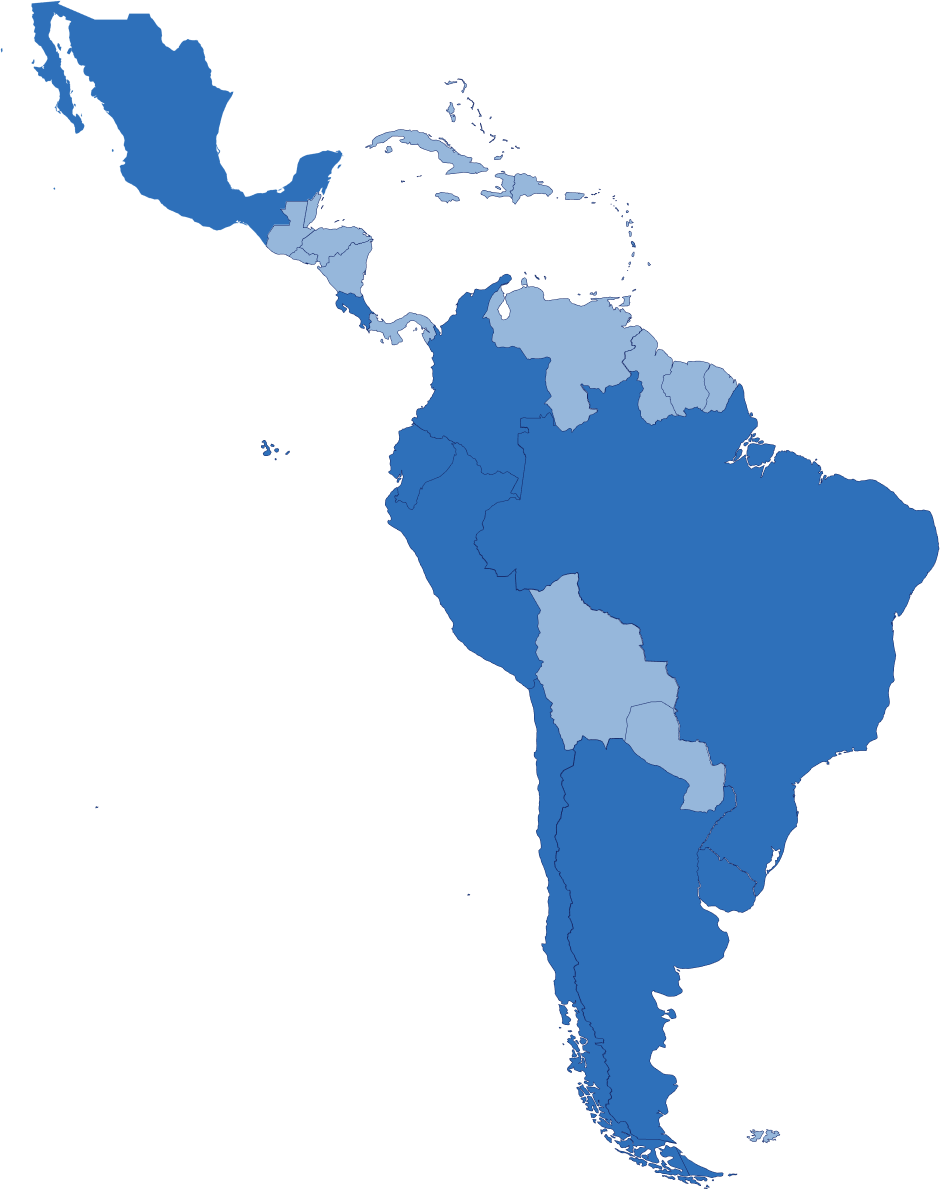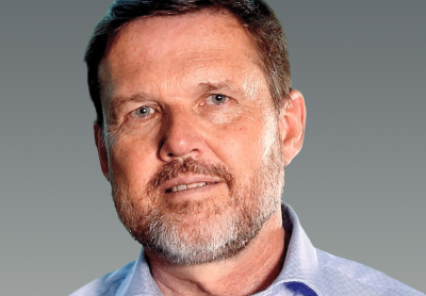We’re transforming Latin America’s healthcare systems
Regional Aspirations
Our Story
Since the 1950s, Latin America has made great strides towards better healthcare, with life expectancy increasing across the continent. Despite enormous progress, the region still faces several healthcare challenges, including differences in access to quality healthcare.
Movement Health aspires to a future where all people have access to the healthcare they need to live longer and better lives. With the UN goal of reducing premature mortality by one third by 2030 in mind, Movement Health works on the ground in Latin America with patients, governments, health leaders and the private and third sectors to prepare health systems for the demands of the future, and supports them in adopting the necessary innovation to achieve better healthcare for all.
Igniting healthcare innovation through public-private partnerships, we help countries in Latin America to develop and scale cutting-edge, sustainable healthcare solutions that save lives, prevent disease and enhance healthcare equity and quality.

Latin America
Despite broad economic and cultural differences, there are many similar healthcare challenges across Latin America that could be addressed via cross-border collaboration, including access and continuity of care, digital infrastructure, data gathering and innovation in biosciences.
Argentina
Country Partners
Brazil
Country Partners
Chile
Country Partners


Colombia
Country Partners


Costa Rica
Country Partners

Ecuador
Country Partners

Mexico
Country Partners
Peru
Country Partners
Uruguay
Country Partners


Regional Policy
Movement Health 2030 aims to contribute to the creation of a long-term, strategic and holistic approach to transforming healthcare in Latin America, combining policy and innovation to ensure quality healthcare for generations to come.
Movement Health 2030 focuses on shifting policy in Latin America around three central topics:
1. Improving digital health infrastructures.
2. Increasing health and digital literacy among citizens and healthcare practitioners.
3. Making resource use as efficient as possible.

Argentina
In Argentina, 61% of the population has access to public healthcare and 13.6% has private coverage. However, the quality of care is often not good enough to prevent death or disability, with high costs for both the patient and the system. There are multiple risk factors, from lifestyle to comorbidities, making it difficult for the system to have adequate management. The challenge is to build interoperable, agile systems in Argentina, along with mature federal regulations for preserving patient confidentiality.
According to official statistics, 100,000 people die annually due to cardiovascular diseases.
Cardiovascular diseases are the leading cause of premature death
Country partners
Brazil
Brazil’s constitutional right to healthcare encompasses primary, secondary and tertiary, but there are huge challenges in providing quality coverage to all its 214 million citizens. Brazil devoted only 10.5% of its public budget to health in 2019, well below the OECD average of 15.3%. Rates of obesity are on the rise, while harmful alcohol consumption has tripled to 17.1% in just six years. More preventative measures and better efficiencies are needed to address these and other lifestyle-related conditions, as well as the challenges of an ageing population.
Country partners
Chile
Waiting times in Chile increased 365% during the COVID-19 pandemic. The national average is now 157.3 days, and among the patients most affected are those with lung cancer, with a total of 3,969 new cases diagnosed in 2020. This is exacerbated by a lack of unified and standardised prioritisation criteria and a fragmentation in decision-making across all levels of care. Absenteeism and lack of operational efficiency inside institutions also affects waiting times and leads to ineffective care.
The population in Chile as of 2020 was a total of 19.1 million. The World Bank estimates that 2.1 million people are part of a waiting list, equivalent to 11.5% of the population.
In 2020, 3969 lung cancers were diagnosed in Chile or 7.3% of all cancers.
A total of 20,694 people died waiting for care in 2020. Of these, 18,962 people died on the waiting list for a consultation or non-GES surgery.
Country partners


Colombia
Cardiovascular diseases are the leading cause of death in Colombia. Three out of every 10 citizens also suffer from diabetes, while 1.6% of the population has been diagnosed with epilepsy. The challenge is to improve access to services, continuity of care, interconnection between healthcare providers and the collection of patient data, enabling the use of digital technologies and interoperability to increase citizen empowerment over its own health management.
Cardiovascular diseases are the leading cause of death in Colombia.
According to the Ministry of Health, three out of 10 Colombians suffer from diabetes.
in 2021, 767,251 patients were diagnosed with epilepsy.
Country partners


Costa Rica
Costa Rica has an integrated health system (public-private) that ensures universal access. The promotion of healthy lifestyles and preventative measures is also an integral part of Costa Rican society. But despite the country's high health coverage (94.4%), the system is struggling to maintain its level of care due to the impact of the COVID-19 pandemic and a growing and ageing population. Long waiting lists and delayed treatments are thus having a high impact on the quality of life.
By 2027, Costa Rica's Social Security expenditures will be less than the income received, causing an economic gap.
Today, waiting lists in areas of medicine such as orthopedics are 792 days, while neurosurgery patients have to wait 655 days.
Country partners

Ecuador
Ecuador’s health system is seen as one of the most efficient globally in terms of life expectancy and relative and absolute health spending. Healthcare is covered by the public and private sectors, and a national health system provides free medical care to all residents, regardless of income. However, the country still struggles with shortages of staff, medicines and equipment, and healthcare coverage is much lower in rural areas. Low-income communities are also vulnerable to malnutrition, poor sanitation and weak preventative measures.
Country partners

Mexico
According to the 2020 census, 70.9% of Mexicans are covered by public healthcare, with 2.3% of the population insured through the private sector. This leaves 32 million Mexicans (26.5%) with no access to any form of healthcare, a situation exacerbated by the COVID-19 pandemic. There is also a shortage of medical professionals, with just 1.95 doctors per 100,000 people. Infant mortality is the highest in the OECD, and the country also struggles with high rates of obesity (32.4%) and diabetes (15.9%).
Country partners
Peru
In Peru, 64% of the population rely on public healthcare. However, there are many challenges when it comes to the efficiency of budget allocation and spending across governmental levels, along with a lack of human resources. This is especially acute at the regional level, which is responsible for 40% of public spending on health. This leads to inequities in access to and quality of care and, overall, lower healthcare coverage for the population.
Since 2010, the execution of health expenditure has been 85% on average.
Health expenditure as a percentage of GDP in Peru was no more than 5.2% in 2018, compared with 12.5% in OECD countries and almost 8% in Latin America.
Anaemia in Peruvian children has a prevalence of 43.6%, with more than one million children suffering from this diagnosis.
Country partners
Uruguay
Uruguay is one of the most advanced countries in terms of electronic medical records (EMRs), but there is still a need for more effective use of the data. The quality of information depends on health professionals, who have limited consultation time, while the quality of analyses depends on working with datasets from all organisations and, therefore, on interoperability agreements. So any data-driven decisions require new models based on the needs of patients.
Country partners









